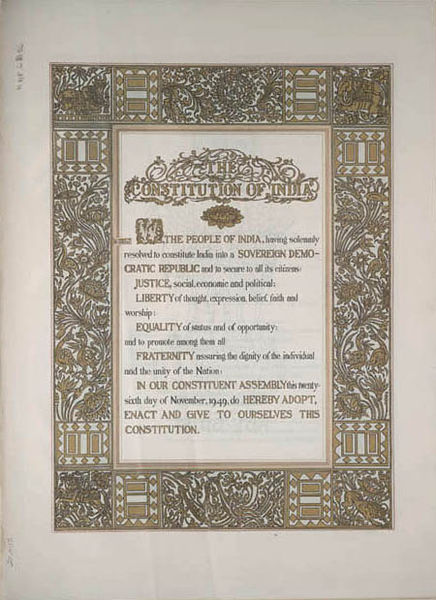Slightly over two decades before Indian independence, Winston Churchill had famously declared “India is merely a geographical expression. It is no more a single country than the Equator.”
His point of view is indeed understandable. Anyone travelling even a fourth of this country by road or rail cannot but notice the striking differences in geography, language, culture, and even race and ‘genetic stock’. Anywhere else, smaller differences would have been reason enough to split such a landmass into more homologous parts. (Here’s looking at you, Europe!)
However, in the past half-century India has disproved Mr. Churchill’s contention stoically, transitioning (albeit painfully) in that period from a collection of independent states to a united republic. We have had our secessionary movements, notably Khalistanis and Naxalites, but the concept of India seems to be in no sense in any grave danger.
The Constitution of India is the foundation stone of the idea of modern India. It is, in verity, the document that defines India, introduces the idea of being Indian, and safeguards India against Indians at the same time.
The Constitution defines the fundamental reasons and objectives for the existence of the Indian Republic. It breathes life into the systems that make the functioning of this country possible. The Constitution draws its power from the people, in that it outlines the rights we give to our ‘Government’ over us.
It is this document that makes us an island of stability in a subcontinent rife with disorder. It is this document that allows you and me to go to work today while our neighbours are burnt alive because they are Tamil or Rohingya.
“It is only one document,” they cry. “Exactly,” I say. Have you read it?
You can download a PDF copy of the Constitution of India here.
Astute readers might notice that the sub-title of this website refers to this document.

